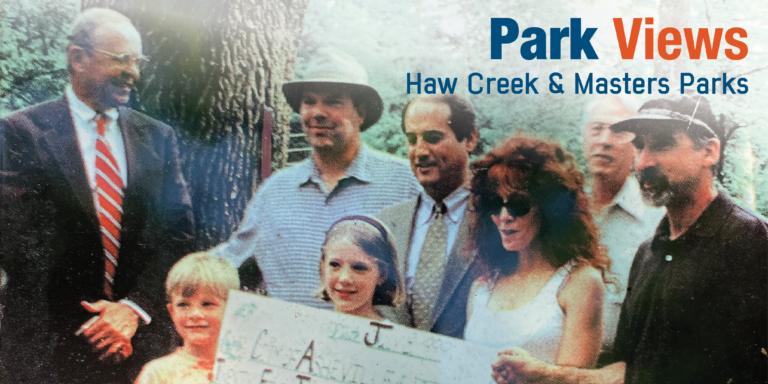This entry is part of Park Views, an Asheville Parks & Recreation series that explores the history of the city’s public parks and community centers – and the mountain spirit that helped make them the unique spaces they are today. Read more from the series.
The best public parks are shaped by the neighbors that surround them, reflecting their sense of pride in building a unique social community. Haw Creek and Masters parks are largely the result of one neighborhood’s determination, organizing, and sweat equity.
Haw Creek
Numerous spear points and stone tools found throughout the Haw Creek neighborhood indicate small semi-permanent villages of hunter-gatherers existed in the area thousands of years ago. It’s likely that their trails along waterways, valleys, and ridges became Cherokee hunting and trading trails, then stagecoach routes, and eventually today’s road system. The modern Haw Creek community developed around a stagecoach stop on the way to Asheville.
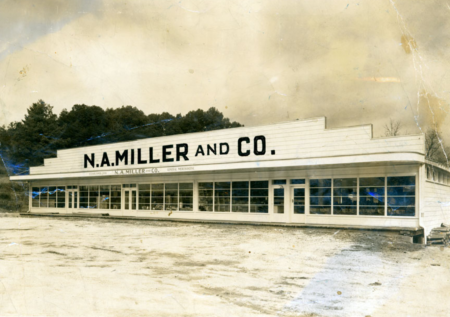 The neighborhood is named for blackhaws, small trees with short crooked trunks and stout spreading branches. Once prolific in the area, their edible berries progress from a pinkish rose to a bluish black.
The neighborhood is named for blackhaws, small trees with short crooked trunks and stout spreading branches. Once prolific in the area, their edible berries progress from a pinkish rose to a bluish black.
Haw Creek remained a rural community of farms surrounded by hills until Beaucatcher Tunnel opened in 1929. Prior to its construction, the only routes into downtown were over Beaucatcher Mountain or along Swannanoa River to Biltmore Avenue. While the tunnel made travel to and from the east side of Asheville much easier, construction of I-240 in the 1970s via an open cut through the mountain accelerated growth in Haw Creek by rezoning the neighborhood to admit high density development.
While the boundaries of Haw Creek historically referred to a much larger area, it is today bound by Bull Mountain to the east and Peach Knob on the north. Water running down these ridges meet on the valley floor and flow into Haw Creek. The creek flows south to the mouth of the valley and westward into Swannanoa River.
Creating a Public Park
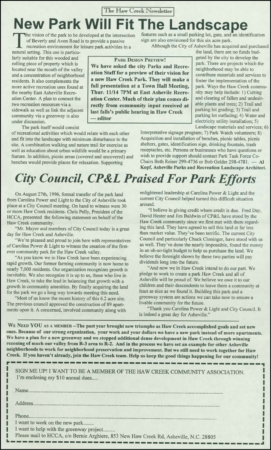 Two of Asheville’s oldest public recreation areas, Asheville Municipal Golf Course and Recreation Park, are located close to Haw Creek in the adjacent Beverly Hills neighborhood. Asheville Parks & Recreation (APR) opened East Asheville Community Center in the mid-1960s with programs for teens, kids, and older adults, while a membership club opened a private pool around the same time. Ballfields adjacent to that pool are now Charlie Bullman Park. As the neighborhood grew to include more than 10% of Asheville’s population, so did the need for additional parks and recreation spaces.
Two of Asheville’s oldest public recreation areas, Asheville Municipal Golf Course and Recreation Park, are located close to Haw Creek in the adjacent Beverly Hills neighborhood. Asheville Parks & Recreation (APR) opened East Asheville Community Center in the mid-1960s with programs for teens, kids, and older adults, while a membership club opened a private pool around the same time. Ballfields adjacent to that pool are now Charlie Bullman Park. As the neighborhood grew to include more than 10% of Asheville’s population, so did the need for additional parks and recreation spaces.
In 1977, much of Haw Creek’s center was rezoned to allow large apartment complexes. The influx of construction and renters concerned long-time residents. When the largest apartment development planned to expand by an additional 89 additional units in 1995, neighbors organized to prevent high density, large scale apartment complexes and campaign for sidewalks, greenways, and parks.
As a result of their efforts, the apartment complex did not expand and APR negotiated to purchase the proposed construction site from its owner, Duke Energy (then Carolina Power & Light). Haw Creek Community Association created the Haw Creek Park task force to help guide creation of the new park. From its earliest meetings, a jogging and biking path, covered picnic area, restrooms, and play area were named as top priorities. With a new playground and outdoor basketball court at East Asheville Community Center, neighbors also placed a heavy focus on ensuring the new park would be a place to connect with nature.
Haw Creek Park
APR’s period of expansion that started in the 1970s met reality in the 1990s: existing facilities needed major repairs and accessibility upgrades – and more funding. While the department committed to purchase the land, the community association pledged to raise an additional $40,000 to match the City of Asheville’s $110,000 to fund the park’s amenities. One inventive fundraiser included selling first aid kits door-to-door for $5 each, raising more than $16,000. The community association also secured grants and private donations.
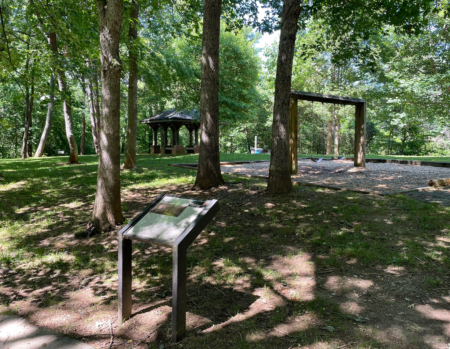 During park design sessions, a desire to document the roots of the Haw Creek community led to residents collecting oral histories. Those interviews evolved into commemorative markers along the path in the new park highlighting significant people and places such as schools, churches, and the park itself. Haw Creek Park’s heritage trail was intended to be an important first link in Haw Creek Greenway, a priority investment of an $18 million parks and greenways bond referendum that failed by just 357 votes in 1999. Residents continue to advocate for the greenway as a safer way to connect neighbors, businesses, schools, and parks in a neighborhood with narrow and winding roads.
During park design sessions, a desire to document the roots of the Haw Creek community led to residents collecting oral histories. Those interviews evolved into commemorative markers along the path in the new park highlighting significant people and places such as schools, churches, and the park itself. Haw Creek Park’s heritage trail was intended to be an important first link in Haw Creek Greenway, a priority investment of an $18 million parks and greenways bond referendum that failed by just 357 votes in 1999. Residents continue to advocate for the greenway as a safer way to connect neighbors, businesses, schools, and parks in a neighborhood with narrow and winding roads.
The park’s grand opening on May 18, 2002 included a potluck celebration, games, and recognition of neighbors who shared their stories and photographs for the heritage trail. While the park has remained largely unchanged over the past two decades, it is better connected by sidewalks to homes and a newer playground at East Asheville Library, built on the site of East Asheville Community Center’s previous playground. Many community members who worked to make the park possible can often be found along the sidewalks to enjoy time with neighbors in the park.
Masters Park
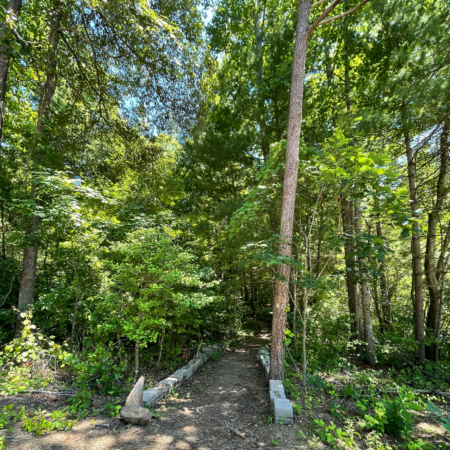 Harnessing the same valley spirit that made Haw Creek Park possible, neighbors rallied to purchase nine wooded acres between Maple Drive and Blue Ridge Parkway National Park to develop a natural botanical area in 2009. City of Asheville, Buncombe County, and Haw Creek Community Association equally split the $720,000 cost to acquire land that became Masters Park. A trail through the park connects to the parkway and Mountains-to-Sea Trail while exposing hikers to more than 200 species of flora and fauna.
Harnessing the same valley spirit that made Haw Creek Park possible, neighbors rallied to purchase nine wooded acres between Maple Drive and Blue Ridge Parkway National Park to develop a natural botanical area in 2009. City of Asheville, Buncombe County, and Haw Creek Community Association equally split the $720,000 cost to acquire land that became Masters Park. A trail through the park connects to the parkway and Mountains-to-Sea Trail while exposing hikers to more than 200 species of flora and fauna.
The Blue Ridge Parkway’s construction holds an important place in Haw Creek’s history of recreation spaces. In 1934, the people of North Carolina successfully lobbied to bring the proposed scenic highway through their state rather than Tennessee. Land acquisition difficulties delayed construction of the portion around Haw Creek until after World War II and that section opened to visitors on July 5, 1952. From Haw Creek Valley Overlook at Milepost 380, visitors can view the valley floor.
Masters Park is named in honor of Rory and Hazel Masters who once owned the park site and much of the surrounding property. Like future Haw Creek residents, their civic pride is represented through lasting contributions including Haw Creek’s fire department. The Masters donated land for the station, paid legal expenses to establish the department, and spearheaded community fundraising for the building and equipment. Rory served as the fire chief and Hazel headed the women’s auxiliary.
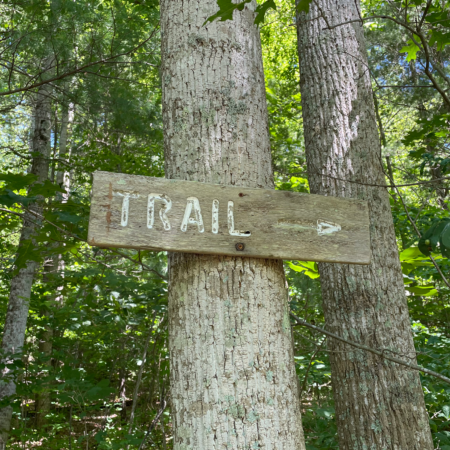 For many years, parking was only available on the shoulder of Maple Drive. In 2021, Haw Creek Community Association raised $50,000 to add an off-road parking lot. Community volunteers helped remove underbrush while a professional engineer built the parking area. APR accepted the donated parking area and has added its operations to annual maintenance of the park.
For many years, parking was only available on the shoulder of Maple Drive. In 2021, Haw Creek Community Association raised $50,000 to add an off-road parking lot. Community volunteers helped remove underbrush while a professional engineer built the parking area. APR accepted the donated parking area and has added its operations to annual maintenance of the park.
Do you have photos or stories to share about Haw Creek Park or Masters Park? Please send them to cbubenik@ashevillenc.gov so APR can be inspired by the past as we plan our future. Sign up for APR’s monthly newsletter and follow APR on Facebook and Instagram for additional photos, upcoming events, and opportunities.
Photo and Image Credits
- Haw Creek Community Association presented a $25,000 check for “investment in the future” to APR on July 8, 1999. The association’s $40,000 commitment to the park was split into two phases with the additional $15,000 presented following construction of restrooms. Pictured are (back, left to right) Frank Fishburne Jr, Chairman of APR Advisory Board; Chris Pelly, Haw Creek Community Association President; Chuck Cloninger, Asheville City Council; Haw Creek Park task force members Beth Reiser, Gerry Hardest, and Bernie Arghiere; and Gabriel Pelly and Julia Pelly. Courtesy of Buncombe County Special Collections, Pack Memorial Public Library, Asheville, North Carolina.
- N.A. Miller’s general store, located near the park at the corner of Beverly and New Haw Creek roads, opened in 1898 to serve the farms of Haw Creek and the region east of Asheville. Much of its early success was due to a stagecoach route through the valley. N.A. and his wife Mary raised cattle and pigs on about fifty acres centered around their store. Around 1941, the MIllers built a new building on 8 Beverly Road for the grocery store and East Asheville Hardware Store, supplying everything from nails and chicken seed to local produce and firewood. Courtesy of Buncombe County Special Collections, Pack Memorial Public Library, Asheville, North Carolina.
- Haw Creek Community Association’s newsletter served as an important tool to unify neighbors and organize against high density development they wished to keep out of their backyards. Even with the arrival of social media platforms and virtual meeting tools, the community newsletter remains an important communication tool in the neighborhood. Courtesy of Haw Creek Community Association.
- At just over six acres, Haw Creek Park retains plenty of natural elements with amenities including paved trails with commemorative markers, swings, and small gazebo in addition to parking, restrooms, and picnic shelter.
- With a site plan by APR landscape architect Al Kpof, Masters Park features a trail that snakes through a tree canopy to connect with Blue Ridge Parkway National Park and Mountains-to-Sea Trail.
- The unpaved hiking trail is clearly marked.
